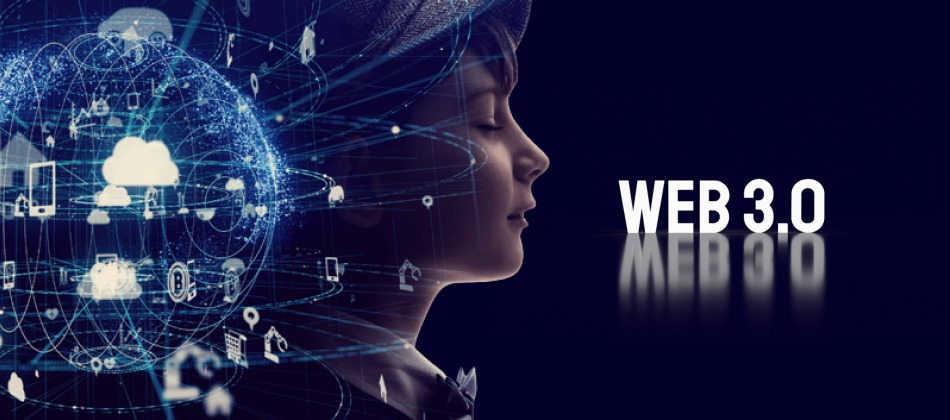
Ever since its inception by Tim Berners Lee back in 1989, the World Wide Web has been undergoing a fascinating evolution. From its early days somewhat depository of information to its transformation into a global platform of interactive experiences and services, the web has undoubtedly had a profound impact on how people receive and interact with each other. And now the web is all set to take another shift and all thanks to recent advancements in Blockchain and other emerging technologies. And Web3.0 is going the best form of this World Wide Web.
Want to know everything about this? Continue reading this blog from the experts at B2C Info Solutions and you would be able to get what exactly is this and what are its advantages as well?
But before we move on that, let’s take a look Evolution of the Web
Web 1.0
The invention of the Web in 1989 was great for the peeps across the globe. However, the earliest iterations of the web were static, meaning that they could support mostly passive consumption of information by users. Together with the limited internet connectivity at the same time, the static nature of the web would prompt people to downplay its importance for years. But its potential was not hidden for too long.
In the late 90s and early 2000s were a reflection of the growing realization that the web could be used for more than just “reading”. It was a transitional period that saw a flurry of mostly ill-fated projects, but the ones that succeeded showcased the huge potential of the web and paved the way for technology’s widespread evolution. Well, the dot-com boom was quite similar to the Crypto boom back in 2017 to 2019.
Web 2.0
The shift to web 2.0 was not a single night event, but it is a gradual process in a rapidly evolving technological landscape. Following the dot com spark of key technological advancements, increases in computing power and improvements in Internet infrastructure fueled the development of more sophisticated services. The web become more engaging and interactive, it become the platform for content creation, online business, and entertainment. It also facilitates the rise of social media. And thanks to the rise of mobile devices, the web, now dubbed web 2.0 has become ubiquitous. However, it is not the highest form.
What exactly is Web 3.0?
So what is next for the Web? Well, the rise of blockchain technology has opened a forbidden door for a backend revolution Where the web is supported by decentralized networks and web services do not have to rely on servers owned by giant tech corporations. The growing number of decentralized apps running blockchain networks like Ethereum is a great example of that particular concept.
Web 3.0 is also expected to take advantage of other emerging technologies like IoT and AI to greatly improve the Web’s capacity for transforming and value and pave the way for new types of web services, just like the rise of web 2.0 enabled services that had been inconceivable during the web earliest iteration.
Perks of Web 3.0
There are mainly three 3 advantages:
Decentralization
This is perhaps the biggest advantage of Web 3.0 stems from its decentralized nature. Many of today’s web services ask the user to provide personal data in order to see the full of benefits of the service. This is significant, as there are guarantees that the service provider would not misuse the user data they collect. In contrast, decentralized networks guarantee that users retain control over their data. The decentralization also means that there is no single point of failure that makes Web 3.0 systems more secure than their centralized counterparts.
Open and Permissionless
Another Significant advantage of the decentralized web is that it is open and permissionless. Since no single entity controls the network, no one can restrict access to the dApps running on it. This also means that there is no censorship in web 3.0 dapps.
Native Money
Another advantage of web 3.0 is monetary terms, in the form of crypto tokens, are native to it. This means that it can be used to transfer value without intermediaries like banks and payment processors.
Disadvantages of Web 3.0
Limited Scalability
The rising popularity of blockchain networks and dApps in recent years has brought into focus the main problem of blockchain-based systems their scalability. For example, the leading dApp platform Ethereum experiences a regular network when dApp activity is high. This problem leads to slower transaction processing speeds and higher service fees.
In order for web 3.0 to become ubiquitous, blockchain networks need to find ways to increase scalability without compromising their decentralized value. One way to achieve this is through the implementation of so-called Layer 2 Scaling solutions, which are designed to reduce the load of main blockchain networks.
High Energy Consumption
Another major issue that actually affects decentralized systems is the fact they require high energy consumption. Well, in particular networks that rely on popular proof-of-work consensus algorithms know to be rather more hungry. This is the mean reason why some of the prominent players in the blockchain space are moving away from PoW.
Final Words
There are many more challenges that need to be solved on the way Web 3.0 Challenges such lack of inheritance between several blockchain networks, the complex implementation of blockchain systems, and the precise coordination needed to ensure that a blockchain network operates more effectively. But our experts have mentioned some key benefits of the same.
To know more about web3.0 or want to discuss your project connect with our experts at info@b2cinfosolutions.com.




